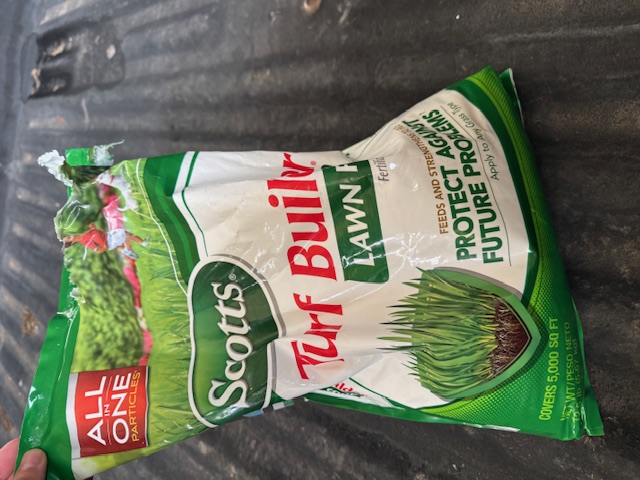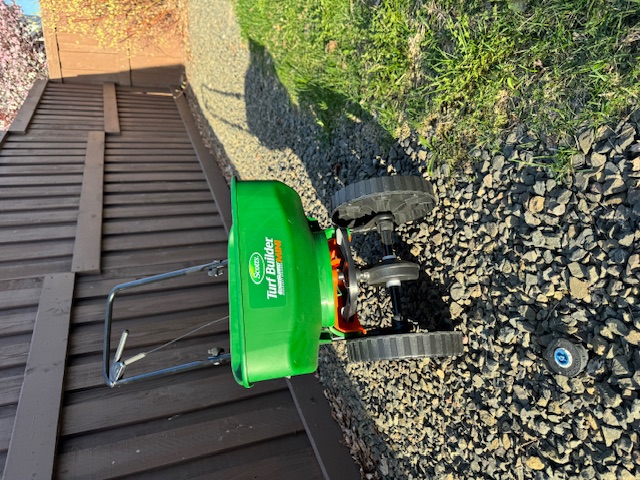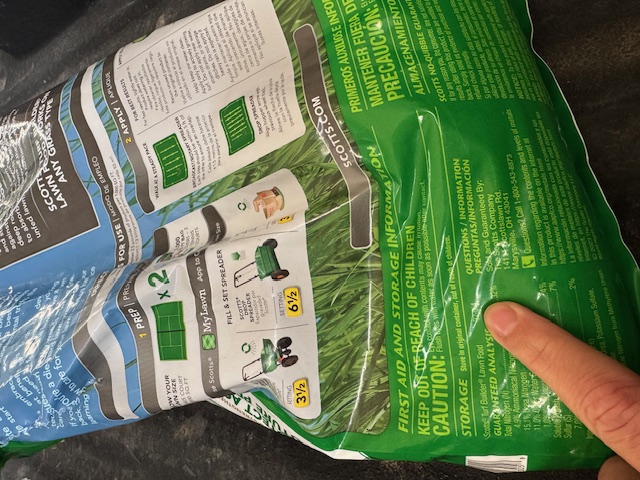Granular + Liquid Lawn Fertilizer Calculator: How Much Do You Need?
Calculate how much fertilizer your lawn needs based on its size and type. Get estimates for granular or liquid fertilizer, and specialized application tips based on grass type.
How to Use the Lawn Fertilizer Calculator
This calculator helps DIY homeowners determine how much fertilizer is needed for a nice looking lawn, without needing to read a book about lawn care. Whether you prefer granular or liquid fertilizer, this tool provides precise measurements and customized recommendations based on your specific grass type. I was employed by TruGreen for a few years in college where I learned how to make similar calculations and estimate yard application amounts.
After entering your lawn measurements and fertilizer details, you can download or copy the results to take with you to the garden center or use for future reference.
Step 1: Choose Your Fertilizer Type
The calculator offers two fertilization methods to match your preferences:
- Granular Fertilization: Traditional dry fertilizer that slowly releases nutrients into the soil.
- Liquid Fertilization: Fast-acting liquid solution that provides immediate nutrient availability.
Each type has its advantages. Granular fertilizers typically last longer and are easier to apply for beginners since they take more time to dissolve into the ground, while liquid fertilizers work faster and provide more even coverage. The calculator accounts for these differences.
Step 2: Enter Your Lawn Size
Input your lawn measurements using your preferred units:
- Square Feet: The standard measurement used in most fertilizer instructions.
- Square Yards: Useful for those who measured their lawn in yards.
- Square Meters: For metric measurements.
- Acres: Ideal for larger properties.
If you have an irregularly shaped lawn, divide it into rectangular sections and add the areas together. Alternatively, walk the perimeter of your lawn and use a lawn area estimation tool. Make sure to account for non-lawn areas such as your house, driveway, and garden beds. But in my experience getting a little extra fertilizer isn't a bad thing if you have some space to safely store it in the garage.

Step 3: Enter Fertilizer Details
For granular fertilizer, you'll need:
- N-P-K Values: Found on the fertilizer bag (e.g., 10-10-10).
- Nitrogen Application Rate: Typically 0.5-1.5 lbs per 1000 sq ft depending on grass type.
- Bag Cost and Weight: For calculating total cost.
For liquid fertilizer, you'll need:
- Application Rate: Gallons per 1000 sq ft (check label)
- Fertilizer Strength: Lbs of nitrogen per gallon
- Container Cost and Volume: For cost calculations
You can also select your grass type for customized recommendations tailored to cool-season or warm-season grasses and their specific nutrient needs.
Step 4: Calculate and Review Results
Click "Calculate Fertilizer" to generate your results, which include:
- Total fertilizer needed (pounds or gallons)
- Number of bags or containers required
- Cost per application
- Grass-specific recommendations
- Application tips for your selected grass type
You can copy or download the results as a CSV file to save for later.
Practical Example: Kentucky Bluegrass Lawn
Let's walk through a practical example to show how the calculator works.

Front Yard Kentucky Bluegrass Example
Lawn Details
- Area: 2,500 square feet
- Fertilizer Type: Granular 20-5-10 (20% nitrogen)
- Nitrogen Rate: 1 lb per 1000 sq ft (standard rate)
- Bag Weight: 50 lbs
- Bag Cost: $30
Calculation Results
Fertilizer Needed
- Nitrogen Needed: 2.5 lbs (1 lb × 2.5)
- Fertilizer Amount: 12.5 lbs (2.5 lbs ÷ 20%)
- Bags Needed: 1 bag (50 lb bag)
Cost Breakdown
- Cost per Pound: $0.60 ($30 ÷ 50 lbs)
- Application Cost: $7.50 ($0.60 × 12.5 lbs)
- Leftover: 37.5 lbs for future applications
Kentucky Bluegrass Tips
Apply in early spring and late fall when temperatures are 60-75°F. Use a broadcast spreader and water thoroughly after application. Avoid summer heat when fertilizing Kentucky Bluegrass.
Understanding N-P-K Values
The three numbers on fertilizer packages (like 10-10-10) represent the percentage of nutrients by weight:
| Element | Symbol | Role in Lawn Health |
|---|---|---|
| Nitrogen | N | Promotes leaf growth and green color |
| Phosphorus | P | Supports root development and establishment |
| Potassium | K | Enhances drought tolerance and disease resistance |
For example, a 16-4-8 fertilizer contains 16% nitrogen, 4% phosphorus, and 8% potassium by weight. The remaining weight consists of inert ingredients and carrier materials. Most lawn fertilization programs focus on nitrogen since it's the nutrient that drives lawn growth and appearance.
Fertilizer Application Rate Guidelines
Different grass types have different nutrient requirements. Here are general guidelines for nitrogen application:
| Grass Type | Nitrogen Rate (per year) | Application Schedule |
|---|---|---|
| Kentucky Bluegrass | 2-4 lbs per 1000 sq ft | Split over 2-4 applications (spring/fall) |
| Tall Fescue | 2-3 lbs per 1000 sq ft | Split over 2-3 applications (spring/fall) |
| Perennial Ryegrass | 2-3 lbs per 1000 sq ft | Split over 2-3 applications (spring/fall) |
| Bermudagrass | 3-5 lbs per 1000 sq ft | Split over 3-5 applications (summer) |
| St. Augustine | 2-4 lbs per 1000 sq ft | Split over 2-4 applications (spring/summer) |
| Zoysia | 2-3 lbs per 1000 sq ft | Split over 2-3 applications (late spring/summer) |

How the Fertilizer Calculator Works
This calculator uses established formulas that lawn care professionals rely on to determine proper fertilization rates. It ensures you apply the right amount of nutrients without wasting product or risking lawn burn from overapplication.
Core Fertilizer Calculations
| Calculation | Formula | Example |
|---|---|---|
| Area Conversion to Square Feet | Depends on input unit | 0.5 acres × 43,560 = 21,780 sq ft |
| Pounds of Nitrogen Needed | (Area in sq ft ÷ 1000) × Application Rate | (5,000 sq ft ÷ 1000) × 1 lb = 5 lbs nitrogen |
| Pounds of Fertilizer Needed | Pounds of Nitrogen ÷ (N% ÷ 100) | 5 lbs N ÷ (20% ÷ 100) = 25 lbs of fertilizer |
| Number of Bags Needed | Pounds of Fertilizer ÷ Bag Weight, rounded up | 25 lbs ÷ 50 lbs = 0.5, rounded up to 1 bag |
| Cost per Application | (Bag Cost ÷ Bag Weight) × Pounds Needed | ($30 ÷ 50 lbs) × 25 lbs = $15 |
Liquid Fertilizer Calculations
| Calculation | Formula | Example |
|---|---|---|
| Gallons Needed | (Area in sq ft ÷ 1000) × Application Rate | (5,000 sq ft ÷ 1000) × 1 gal = 5 gallons |
| Total Nitrogen Applied | Gallons × Nitrogen per Gallon | 5 gallons × 0.5 lbs/gal = 2.5 lbs nitrogen |
| Containers Needed | Gallons Needed ÷ Container Volume, rounded up | 5 gallons ÷ 1 gallon = 5 containers |
| Cost per Application | (Container Cost ÷ Container Volume) × Gallons Needed | ($20 ÷ 1 gal) × 5 gal = $100 |
Unit Conversions
The calculator handles various measurement units with these conversion factors:
- Area Conversions:
- 1 square yard = 9 square feet
- 1 square meter = 10.764 square feet
- 1 acre = 43,560 square feet
All calculations are based on industry-standard practices used by lawn care professionals. The calculator helps you avoid both under-application (which won't give desired results) and over-application (which can burn your lawn and waste money). When in doubt, it's generally better to apply slightly less than the maximum recommended amount and observe your lawn's response.
Safety should always be priority number one when fertilizing. Wear gloves when handling fertilizer products and follow label instructions precisely. Keep children and pets off treated areas until the fertilizer has been watered in and the lawn has dried. Store unused fertilizer in a dry, safe location away from heat sources, and dispose of empty containers according to local regulations.
Using the information provided in this calculator, you'll be well-equipped to create and maintain a lush, healthy lawn. As a compliment to fertilization you might also consider an aeration with the Lawn Aeration Cost Calculator here.
